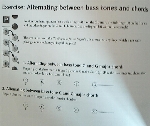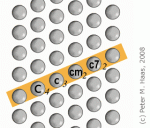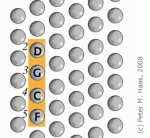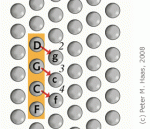A new tutor book arrived today; "Play Accordion Volume 1" by Peter M. Haas. I started to read through it and at the section talking about where to position your fingers on the bass section I was a little confused. When I had lessons years ago I was taught 4th finger on bass note & 3rd finger on major chord. I know other people play with 3rd & 2nd finger instead, but I haven't come across anything quite like what is shown in this book (sorry it's a little blurry).

It seems like the book advocates using different finger combinations for different notes; 3 & 2 for G, 4 & 3 for C, 5 & 4 for F. I haven't read much past this yet, so don't know how they cope when you've run out of finger combinations!
Has anyone come across this before? Are there any advantages to using this method?

It seems like the book advocates using different finger combinations for different notes; 3 & 2 for G, 4 & 3 for C, 5 & 4 for F. I haven't read much past this yet, so don't know how they cope when you've run out of finger combinations!
Has anyone come across this before? Are there any advantages to using this method?



